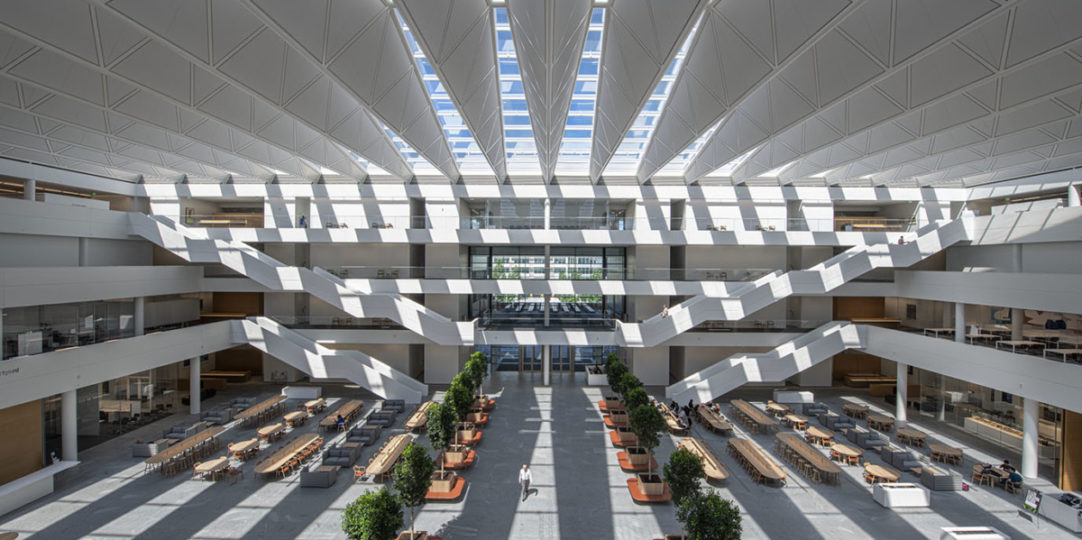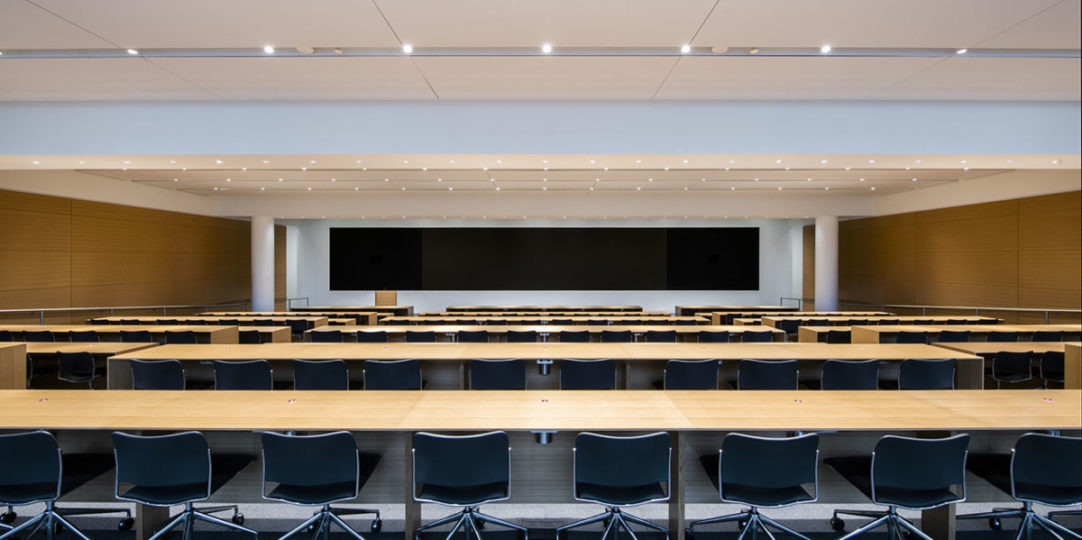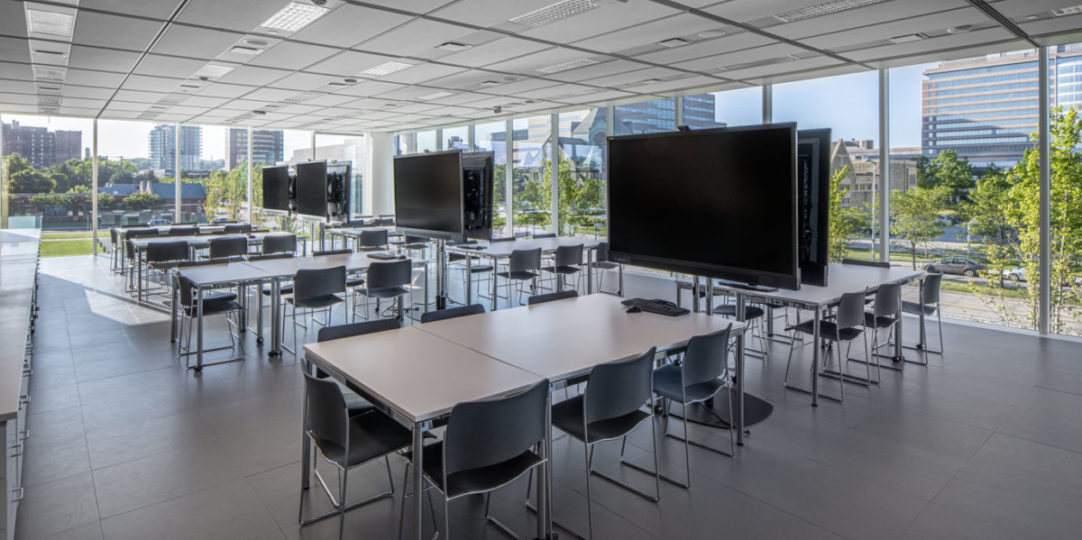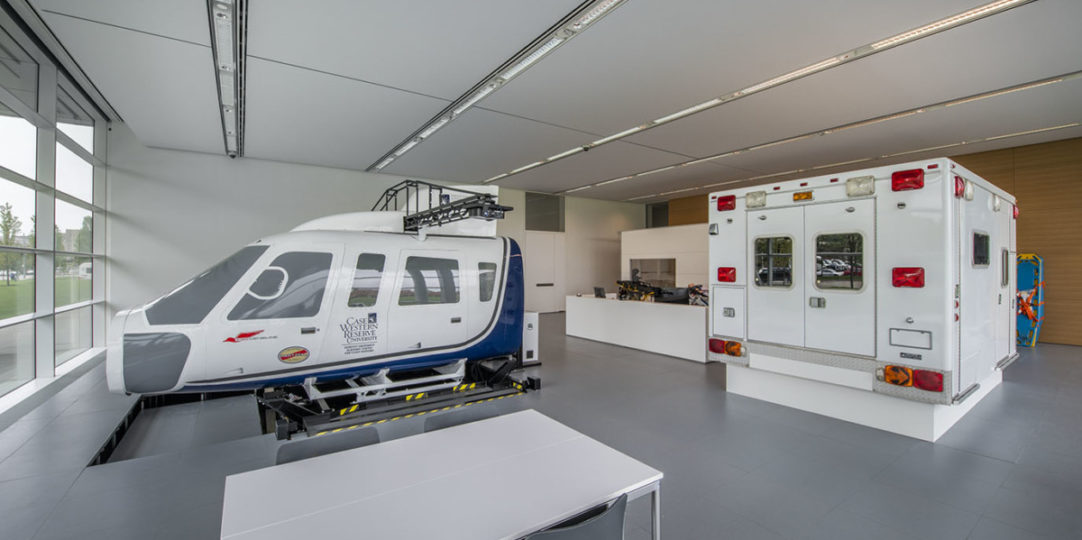Projects • Health Education Campus Sheila and Eric Samson Pavilion
Health Education Campus Sheila and Eric Samson Pavilion
Cleveland, Ohio
The Cleveland Clinic and Case Western Reserve University (CWRU) have embarked on a new $515 million combined Health Education Campus to serve as a central location where both institution’s students can interact and learn together — something they will do once they graduate and become part of the medical community themselves.
The resulting building is the Sheila and Eric Samson Pavilion, designed by world-famous architect Lord Norman Foster of England. With a goal of creating a state-of-the-art building that makes Cleveland as renowned internationally for medical education as it is for clinical care, the four-story, 485,000 SF facility houses Cleveland Clinic’s Lerner College of Medicine and Case Western Reserve University’s School of Medicine, School of Dental Medicine, and Frances Payne Bolton School of Nursing. SSR provided mechanical, electrical, plumbing, and fire protection design services to the project as well as assistance with LEED facilitation.
The design process was complex from the beginning. With a team made up of facility staff from both the Clinic and CWRU, along with multi-faceted architectural, engineering, and construction teams, frequent collaborative meetings and open communication were key. SSR’s engineers worked to understand not only both owners’ goals and objectives, but also the vision of the architect of record, Foster + Partners, who also developed the initial engineering design plans for the project. Early design meetings occurred with the architect, engineers, and owner to accommodate the owners’ needs in the building. Evaluation of several heating and cooling system types, including geothermal, occurred early in the design process. SSR, the engineer of record for the project, was involved in an extensive amount of coordination with Foster + Partners regarding ceiling elements and the placement of wall-mounted devices like thermostats and lighting. In order to bring the architectural vision for the building to reality, the team determined that the initial answer to any question or request would not be “no”, but rather an explanation of the impact of that request on the building systems.
Early involvement was also crucial in order to adapt the engineering systems for such a high-end architecturally designed building. One challenge involved developing a solution to minimizing roof-mounted equipment so it could not be seen from inside the 80-foot-high, 27,000 SF, glass-covered atrium that makes up the center of the building. Through innovative design, SSR engineers were able to lower the cooling towers enough to be functional while not seen. Efforts were also made to ensure ductwork was not visible inside the building. SSR’s engineers had to keep in constant contact with the other members of the design team to ensure that walls and ceilings would accommodate the systems they weren’t yet finished designing and that these systems were maintainable. The strong and reliable communication was crucial to the success of the project.
The LEED Gold® certified building also features a variety of sustainable elements beyond LED lighting and low-flow plumbing fixtures. The building features dedicated outside air units — one for each quadrant of the building — with heat recovery using exhaust/relief air to pre-condition outside air. The fourth floor utilizes chilled beam technology for heating and cooling. Because the building features an exterior that is a glass curtain-wall system, internal and external shielding devices were designed for energy conservation. The large, open atrium has radiant heating and cooling in the floor slab for efficiency.
The beautiful, high-end building, opened in time for Fall 2019 classes, integrates classrooms and high-tech simulation labs with leading-edge technology to provide students with the best medical education possible.
Owner
- Cleveland Clinic and Case Western Reserve University
Project Completion
- 2019






